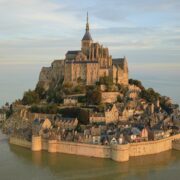Surprising Story: Nélie Jacquemart-André and the Chaalis Abbey

Entrance, Musee Jacquemart-André
One of the most anticipated cultural events of this autumn season is the reopening of the Musée Jacquemart-André. Closed for one year for renovations, the sumptuous mansion of Édouard André and Nélie Jacquemart houses their impressive collection of Italian renaissance and eighteenth-century French art. The splendid inaugural exhibit Masterpieces from the Borghese Gallery will be on view until January 6, 2025. The reopening of the museum offers us a chance to share with you a new Surprising Story about the fascinating life of Nélie Jacquemart-André, her career as a renowned portraitist, and her little-known acquisition of the Chaalis Abbey, an outpost of the museum, now a cultural venue under the direction of the Institut of France.

Nélie Jacquemart-André, Self Portrait (1868), Henri Regnault, Nélie Jacquemart in Rome, (1866)
Cornélie Barbe Hyacinthe Jacquemart, who went by her nickname Nélie, was born in Paris in 1841. It’s thought that Nélie’s father, who worked for a local National Deputy candidate, Alphée Bourdon de Vatry, died shortly after her birth. Madame de Vatry recognised Nélie’s artistic talent and took charge of her eduction arranging art lessons for Nélie while she spent summers at the wealthy couple’s hunting lodge at the former Chaalis Abbey, located 50 kilometers northeast of Paris.
Madame de Vatry continued to foster Nélie’s artistic development by paying for her studies at the private workshop of Léon Cogniet, a professor at the École nationale supérieure des beaux-arts, the Paris Fine Arts Academy.

Musee Jacquemart-André, grand staircase and winter garden
When she was 22, Nélie first exhibited at the prestigious Salon of Painting and Sculpture, after which she received several portrait commissions. She received a medal at the Salon of 1868 and as her career began to flourish. Nélie was soon painting portraits of the top elites of Paris, including President Adolphe Thiers and banking heir Édouard André. Although this was a fateful encounter, it wasn’t until nine years later, when Édouard was 48 and Nélie was 40, that they decided to marry.
Nélie gave up painting and the couple dedicated their lives to their shared passion for collecting art. They traveled to Italy several times, purchasing notable pieces of Renaissance art from auction houses and antique dealers, a collection that became the most important in France, second only to the Louvre. Pursuing their travels, they ventured throughout Europe and as far as Egypt and Turkey.

Chaalis Abbey, courtesy of Chaalis Abbey
After Édouard died in 1894, Nélie remained devoted to collecting and went even further afield, to India and Sri Lanka. She was planning on continuing on to China and Japan when she learned that the Abbaye Royale de Chaalis was for sale in 1902. She paused her trip to return to France to achieve her greatest desire, that of acquiring Chaalis.
“I want Chaalis very much,” said Nélie, who considered it to be “a place of rest and activity, that is good and healthy because I’m just a rolling stone…”.
The Chaalis Abbey had been converted into a château after the Revolution and was restored from 1850 onwards by Madame de Vatry. In addition to the medieval ruins of its Cistercian Abbey, the manor house dated from the 1730s, designed by the same architect who built the Château de Chantilly’s famous stables. Nélie considered the Abbaye at Chaalis as her country retreat and it was where she displayed part of her collections of decorative arts, but also paintings.

Chaalis Abbey Rose Garden, courtesy of Chaalis Abbey
For the next ten years, until her death in 1912, Nélie endeavoured to create a “museum of the abbey of the kings of France.” Bequeathed, along with her Paris mansion, to the Institut de France, the Abbey’s highlights include a reception room with paintings, sculptures, and objets d’art from the Middle Ages and the Renaissance, a long gallery, the same length of Versailles’s Hall of Mirrors, a library and an Oriental salon.
The Abbey is surrounded by an extensive park and rose garden that was commissioned in the 1920s by Louis Gillet, the curator of the on-site Musée Jacquemart-André, and reimagined by garden designer André Gamard in 2000. Every June, it hosts the Journées de la Rose – ‘floral salons’ featuring more than 100 horticultural exhibitors. Chaalis’s exceptional garden and art collection are a beautiful example of nature meeting art.
We are pleased to reinstate our tours to the Jacquemart-André museum as part of our regular offerings where we can visit Nélie’s private apartments and learn more about her career. We can also plan an extended excursion to learn about Nélie’s collections at the Chaalis Abbey. Contact us here for further information and to book your tours.





Leave a Reply
Want to join the discussion?Feel free to contribute!